Comprehensive Guide to Garden Clearance in Junk Removal Waste
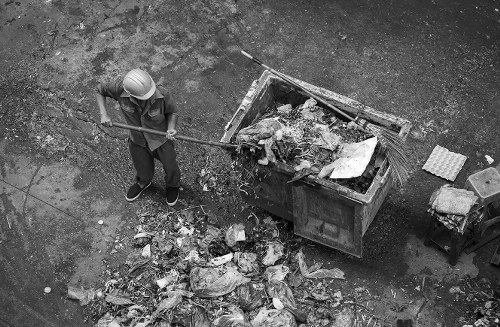
Maintaining a beautiful garden often involves regular upkeep and occasional clearance of unwanted materials. Whether you're renovating your outdoor space or simply decluttering, garden clearance plays a crucial role in ensuring a tidy and aesthetically pleasing environment. Effective garden clearance not only enhances the visual appeal of your property but also contributes to a healthier ecosystem by properly managing waste.
Junk removal waste management has become increasingly important as people strive to live more sustainably. By responsibly clearing garden waste, you can reduce your environmental footprint and promote recycling and reuse of materials. This article delves into the various aspects of garden clearance, the types of waste involved, and the best practices for efficient junk removal.
Understanding the scope of garden clearance is essential for planning and executing the process effectively. It involves the removal of various types of waste, including green waste like branches, leaves, and grass clippings, as well as non-organic materials such as old furniture, broken tools, and other debris. Proper categorization and handling of these materials ensure that they are disposed of or recycled appropriately.
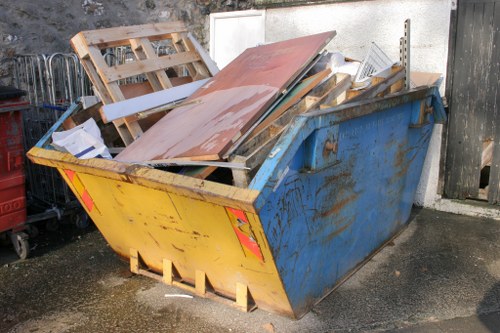
The Importance of Garden Clearance
Garden clearance is more than just tidying up your outdoor space; it has several benefits that contribute to both the aesthetics and health of your garden. Regular clearance helps prevent the overgrowth of plants, which can lead to structural damage to property and create a habitat for pests. It also facilitates better air circulation and sunlight penetration, promoting the growth of healthy plants.
Moreover, efficient garden clearance helps in managing waste effectively. By separating recyclable materials from non-recyclable ones, you can minimize the amount of waste sent to landfills. This practice supports environmental conservation efforts and aligns with sustainable living principles.
Another significant advantage of garden clearance is the improvement of property value. A well-maintained garden enhances curb appeal, making your property more attractive to potential buyers or visitors. It reflects a sense of care and responsibility, which can positively influence perceptions and increase the overall value of your home.
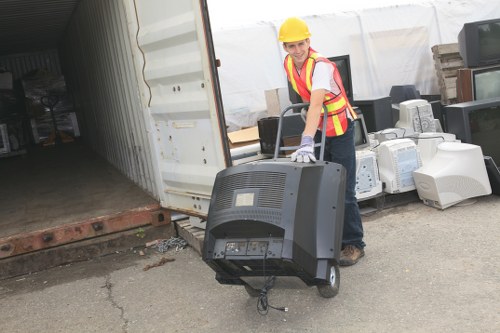
Types of Waste in Garden Clearance
Garden clearance involves handling a variety of waste types, each requiring specific disposal methods. Understanding these categories is essential for effective junk removal and environmental compliance.
Green Waste
Green waste includes organic materials such as leaves, grass clippings, branches, and plant trimmings. These materials can be composted or mulched to create nutrient-rich soil for your garden. Composting organic waste reduces methane emissions from landfills and provides a sustainable way to recycle nutrients.
Non-Organic Waste
Non-organic waste comprises items like old garden furniture, broken tools, and plastic containers. These materials often require specialized recycling processes to prevent environmental contamination. Proper disposal of non-organic waste ensures that hazardous substances are handled safely and that recyclable materials are repurposed.
Hazardous Waste
Hazardous waste in garden clearance includes pesticides, fertilizers, and chemicals used for plant care. These substances must be disposed of following strict regulations to avoid soil and water contamination. Utilizing professional junk removal services can help ensure the safe handling and disposal of hazardous materials.
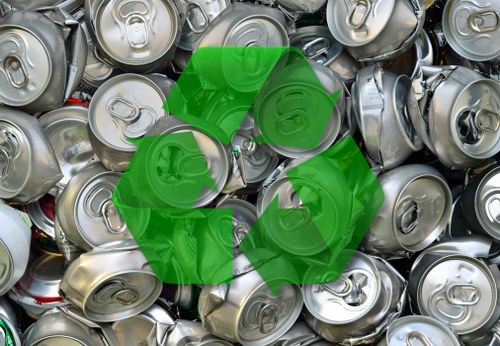
Best Practices for Garden Clearance
Effective garden clearance requires careful planning and execution. Here are some best practices to help you manage the process efficiently:
- Plan Ahead: Assess the extent of the garden clearance project and create a detailed plan outlining the tasks, tools, and resources needed.
- Sort and Categorize: Separate waste into different categories such as green, non-organic, and hazardous waste to facilitate proper disposal.
- Use the Right Equipment: Utilize appropriate tools like pruning shears, wheelbarrows, and compost bins to streamline the clearance process.
- Hire Professionals: For large-scale projects or hazardous waste disposal, consider hiring professional junk removal services to ensure compliance with environmental regulations.
- Recycling and Composting: Implement recycling and composting practices to minimize waste and promote sustainability.
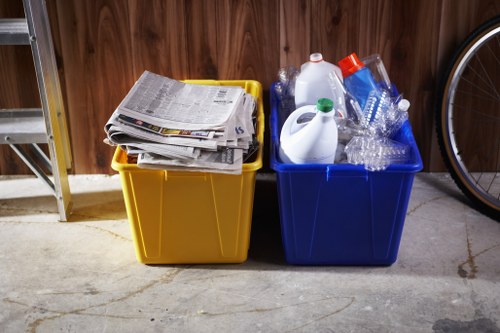
Choosing the Right Junk Removal Service
Selecting a reliable junk removal service is critical for successful garden clearance. Here are some factors to consider when making your choice:
Experience and Expertise
Opt for companies with extensive experience in garden clearance and junk removal. Experienced professionals understand the nuances of waste management and can handle various types of materials efficiently.
Environmental Responsibility
Choose services that prioritize environmentally friendly practices, such as recycling and proper disposal of hazardous waste. This ensures that your garden clearance contributes positively to sustainability efforts.
Cost-Effectiveness
Compare prices and services among different providers to find a cost-effective solution that meets your needs without compromising on quality.
Customer Reviews
Check customer testimonials and reviews to gauge the reliability and performance of the junk removal service. Positive feedback indicates a trustworthy and efficient provider.
Licensing and Insurance
Ensure that the junk removal service is properly licensed and insured to protect yourself from potential liabilities during the garden clearance process.

Steps to Effective Garden Clearance
Follow these steps to ensure a smooth and efficient garden clearance process:
- Assessment: Evaluate the area to identify the types and quantities of waste that need to be cleared.
- Segregation: Separate waste into recyclable, compostable, and non-recyclable categories.
- Preparation: Gather necessary tools and equipment to facilitate the clearance process.
- Clearance: Systematically remove waste, ensuring that each category is handled appropriately.
- Disposal: Transport the sorted waste to designated recycling centers, compost facilities, or landfills as needed.
- Final Inspection: Review the cleared area to ensure that no debris has been left behind and that the garden is tidy.

Environmental Impact of Proper Garden Clearance
Proper garden clearance significantly impacts the environment by reducing waste, promoting recycling, and conserving natural resources. Here’s how:
- Waste Reduction: By appropriately managing garden waste, you minimize the amount of trash sent to landfills, thereby reducing methane emissions and conserving landfill space.
- Recycling and Reuse: Recycling materials like metal, wood, and plastic reduces the need for virgin resources, lowering the overall environmental footprint.
- Soil Health: Composting organic waste enriches the soil, promoting healthier plant growth and reducing the need for chemical fertilizers.
- Biodiversity: A well-maintained garden supports local wildlife and promotes biodiversity, creating a balanced ecosystem.

Tools and Equipment for Garden Clearance
Having the right tools and equipment is essential for efficient garden clearance. Here are some must-have items:
- Pruning Shears: For trimming branches and cutting through dense vegetation.
- Rakes: To gather leaves, grass clippings, and other debris.
- Wheelbarrows: For transporting heavy or bulky waste materials.
- Gloves: To protect your hands from thorns, sharp objects, and dirt.
- Compost Bins: For collecting and processing organic waste into compost.
- Trash Bags: Durable bags for collecting and containing non-recyclable waste.

Safety Tips for Garden Clearance
Garden clearance can involve physical labor and potential hazards. Follow these safety tips to protect yourself:
- Wear Protective Gear: Use gloves, safety goggles, and sturdy footwear to prevent injuries.
- Use Tools Properly: Ensure you know how to operate tools safely to avoid accidents.
- Lift Correctly: Use proper lifting techniques to prevent back injuries when handling heavy objects.
- Stay Hydrated: Drink plenty of water, especially during hot weather, to stay hydrated and avoid heat-related illnesses.
- Take Breaks: Avoid overexertion by taking regular breaks during the clearance process.
- Avoid Hazardous Materials: Handle hazardous waste with care and dispose of it according to local regulations.

Recycling and Disposal Options
After segregating your garden waste, knowing the appropriate recycling and disposal options is crucial:
Composting
Compost your green waste to create nutrient-rich soil amendments. Composting reduces landfill waste and provides a sustainable way to recycle organic materials.
Recycling Centers
Take non-organic waste, such as metal tools and plastic containers, to local recycling centers. Recycling helps conserve resources and reduces environmental impact.
Landfill Disposal
For waste that cannot be recycled or composted, use authorized landfill facilities. Ensure that you follow local regulations for proper disposal.
Bulk Waste Collection
Many municipalities offer bulk waste collection services. Schedule a pickup to dispose of large items that cannot be handled through regular waste collection.

Benefits of Professional Garden Clearance Services
Hiring professional garden clearance services offers several advantages:
- Efficiency: Professionals have the expertise and equipment to clear your garden quickly and effectively.
- Compliance: They are well-versed in local regulations and ensure that waste is disposed of legally and responsibly.
- Safety: Professionals handle hazardous materials and heavy lifting, reducing the risk of injury.
- Convenience: Outsourcing garden clearance saves you time and effort, allowing you to focus on other tasks.
- Quality: Professional services ensure that your garden is cleared thoroughly and to high standards.

Cost Factors in Garden Clearance
The cost of garden clearance can vary based on several factors. Understanding these can help you budget appropriately:
- Volume of Waste: Larger amounts of waste will typically incur higher costs due to the increased labor and disposal fees.
- Type of Waste: Hazardous materials or non-recyclable items may require special handling, leading to additional charges.
- Accessibility: Gardens that are difficult to access or have limited space for equipment can increase the complexity and cost of clearance.
- Location: Disposal fees and service charges can vary depending on your geographical location and local regulations.
- Service Provider: Different companies have varying pricing structures based on their expertise, reputation, and service offerings.
Tips to Reduce Costs
- Plan and Organize: A well-organized clearance process can minimize time and labor costs.
- Sort Waste Yourself: Separating recyclables and compostables beforehand can reduce disposal fees.
- Compare Quotes: Obtain multiple quotes from different service providers to find the best deal.
- Schedule During Off-Peak Times: Some companies offer discounts for services booked during less busy periods.

Sustainable Practices in Garden Clearance
Adopting sustainable practices in garden clearance not only benefits the environment but also promotes a responsible lifestyle. Here are some sustainable practices to consider:
Reuse Materials
Before discarding items, assess if they can be repurposed. Old furniture can be refurbished, and broken tools can be repaired or donated.
Composting Organic Waste
Convert garden waste into compost to enrich your soil naturally. Composting reduces the need for chemical fertilizers and supports plant health.
Recycling Non-Organic Waste
Ensure that recyclable materials are taken to appropriate facilities. Recycling metal, plastic, and wood conserves resources and reduces environmental impact.
Using Eco-Friendly Disposal Methods
Choose disposal methods that minimize environmental harm. Avoid burning waste and opt for environmentally responsible recycling and landfill options.

Common Challenges in Garden Clearance
Garden clearance can present several challenges, but with proper planning, they can be effectively managed:
- Heavy or Bulky Waste: Large items like old furniture or machinery require special handling and transportation.
- Hazardous Materials: Proper disposal of chemicals and pesticides necessitates adherence to safety protocols.
- Limited Access: Narrow pathways or uneven terrain can complicate the clearance process.
- Time Constraints: Balancing garden clearance with other responsibilities can be challenging without effective time management.
- Budget Limitations: Managing costs while ensuring thorough clearance requires careful budgeting and resource allocation.
Solutions to Overcome Challenges
- Hire Professionals: Professional services have the expertise and equipment to handle heavy or hazardous waste efficiently.
- Plan Access: Clear pathways and ensure easy access to the garden area to facilitate the clearance process.
- Set a Budget: Establish a clear budget and prioritize tasks to manage costs effectively.
- Allocate Time: Schedule specific times for garden clearance tasks to stay organized and on track.

Seasonal Considerations for Garden Clearance
Different seasons present unique opportunities and challenges for garden clearance. Understanding these can help you optimize the process:
- Spring: Ideal for clearing debris from winter, preparing beds for planting, and pruning overgrown shrubs.
- Summer: Focus on maintaining gardens, managing growth, and removing weeds to keep the garden vibrant.
- Autumn: Excellent for clearing fallen leaves, preparing the garden for winter, and composting seasonal waste.
- Winter: While plant growth slows, it’s a good time for planning and addressing any structural garden issues.
Tips for Each Season
- Spring: Start fresh by removing dead plants and debris, and composting seasonal waste.
- Summer: Implement regular maintenance routines to manage ongoing growth and prevent clutter.
- Autumn: Collect and compost leaves and other fallen materials to enrich the soil for the next planting season.
- Winter: Focus on protective measures for your garden and plan for the upcoming year’s clearance needs.

DIY vs. Professional Garden Clearance
Deciding between DIY garden clearance and hiring professionals depends on various factors, including the size of the project, your expertise, and available resources.
DIY Garden Clearance
Embarking on a DIY garden clearance can be rewarding and cost-effective. It allows you to control every aspect of the process and tailor it to your specific needs. However, it requires time, effort, and the right tools to ensure thorough and efficient clearance.
Professional Garden Clearance
Professional services offer expertise, efficiency, and comprehensive waste management solutions. They handle all aspects of clearance, from sorting and removal to recycling and disposal, allowing you to focus on other priorities. While it may be more expensive initially, the benefits often outweigh the costs, especially for large or complex projects.
Making the Choice
- Assess the Scope: For small gardens, DIY might be feasible, whereas larger spaces may benefit from professional help.
- Evaluate Your Skills: Consider your ability to handle the physical demands and technical aspects of garden clearance.
- Consider Time Constraints: If you lack the time to dedicate to the clearance process, professionals can offer a timely solution.
- Budget: Weigh the costs of DIY tools and potential disposal fees against the service charges of professional providers.

Innovations in Junk Removal and Garden Clearance
The junk removal industry is evolving with new technologies and practices improving efficiency and sustainability in garden clearance. Here are some notable innovations:
Advanced Sorting Technologies
Modern junk removal services utilize advanced sorting systems to efficiently separate recyclables from non-recyclables, enhancing the accuracy and speed of the clearance process.
Eco-Friendly Disposal Methods
Innovations in recycling and composting techniques ensure that garden waste is handled in an environmentally responsible manner, reducing the overall impact on the planet.
Automated Equipment
Automated machinery and tools streamline garden clearance tasks, allowing for faster and more precise removal of waste materials.
Digital Scheduling and Tracking
Online platforms enable customers to schedule junk removal services conveniently and track the progress of their garden clearance in real-time.

Case Studies: Successful Garden Clearance Projects
Examining real-life examples of successful garden clearance projects provides valuable insights and inspiration. Here are a few case studies:
Urban Garden Makeover
An urban homeowner transformed a cluttered rooftop garden into a vibrant green space by hiring professional junk removal services. The team efficiently cleared old furniture, broken tools, and overgrown plants, implementing sustainable disposal methods. The result was a stunning garden retreat that enhanced the homeowner’s living experience and property value.
Community Garden Revamp
A community garden project involved clearing large amounts of organic and non-organic waste accumulated over the years. Professional services streamlined the process, ensuring proper recycling and composting of materials. The revamped garden now serves as a thriving hub for local residents, promoting community engagement and environmental stewardship.
Residential Property Renewal
A family decided to renew their backyard by removing old structures, invasive plants, and miscellaneous debris. By partnering with a junk removal service, they achieved a clean and organized garden space ready for new landscaping and recreational activities. The efficient clearance facilitated a smooth transition to the redesigned garden layout.

Future Trends in Garden Clearance and Junk Removal
The future of garden clearance and junk removal is poised to embrace even more sustainable and technologically advanced practices. Anticipated trends include:
- Increased Automation: The use of robotics and automated systems will further enhance the efficiency of garden clearance processes.
- Greater Emphasis on Sustainability: Efforts to minimize environmental impact will drive innovations in recycling, composting, and eco-friendly disposal methods.
- Integration of Smart Technology: Smart sensors and IoT devices will optimize waste management, providing real-time data for better decision-making.
- Personalized Services: Customized junk removal solutions tailored to individual needs will become more prevalent, offering greater flexibility and satisfaction.
- Enhanced Recycling Techniques: Advances in recycling technology will allow for the processing of a wider variety of materials, reducing the need for landfills.

Conclusion
Garden clearance is an essential aspect of maintaining a beautiful and healthy outdoor space. By understanding the types of waste involved, implementing best practices, and leveraging professional junk removal services, you can achieve an efficient and environmentally responsible clearance process. Embracing sustainable practices not only enhances the aesthetics of your garden but also contributes to broader environmental conservation efforts.
Whether you choose to undertake the clearance yourself or hire experts, prioritizing proper waste management and disposal will ensure that your garden remains a thriving and welcoming space for years to come.
Contact us today to learn more about our professional garden clearance and junk removal services, and let us help you create the garden of your dreams.



